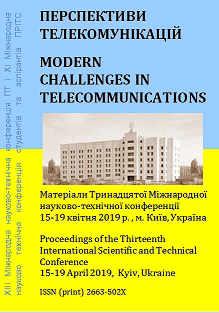МЕТОД КЛАСТЕРИЗАЦІЇ ДЛЯ ОБРОБКИ ВЕЛИКИХ ОБСЯГІВ ДАНИХ
Ключові слова:
КЛАСТЕРИЗАЦІЯ, ДАНІАнотація
Clustering method for processing of large data types
The article describes a description of the clustering algorithm for its application in the processing of large volumes of data and in the creation of fuzzy knowledge bases with sets of rules of fuzzy logic.
У статті наводиться опис алгоритму кластеризації для застосування його при обробці великих обсягів даних та при створенні нечітких баз знань з наборами правил нечіткої логіки.
Посилання
Approach to determining the number of clusters in a data set. / Ivan Ishchenko, Larysa Globa, Yurii Buhaienko, Andrii Liashenko National Technical University of Ukraine ”Igor Sikorsky Kyiv Polytechnic Institute” Kyiv.
Нечеткое моделирование и управление. А. Пегат c. [520-530].
Fuzzy C-means Algorithms for very large data. Timothy C. Havens, James C. Bezdek, Cristopher Leckie, Lawrence O. Hall, Marimuthu Palaniswami. IEEE Transactions on Fuzzy Systems 2012.
##submission.downloads##
Як цитувати
Номер
Розділ
Ліцензія
Авторське право (c) 2019 Андрій Володимирович Ляшенко, Юрій Михайлович Бугаєнко

Ця робота ліцензується відповідно до Creative Commons Attribution 4.0 International License.
Authors who submit to this conference agree to the following terms:a) Authors retain copyright over their work, while allowing the conference to place this unpublished work under a Creative Commons Attribution License, which allows others to freely access, use, and share the work, with an acknowledgement of the work's authorship and its initial presentation at this conference.
b) Authors are able to waive the terms of the CC license and enter into separate, additional contractual arrangements for the non-exclusive distribution and subsequent publication of this work (e.g., publish a revised version in a journal, post it to an institutional repository or publish it in a book), with an acknowledgement of its initial presentation at this conference.
c) In addition, authors are encouraged to post and share their work online (e.g., in institutional repositories or on their website) at any point before and after the conference.

